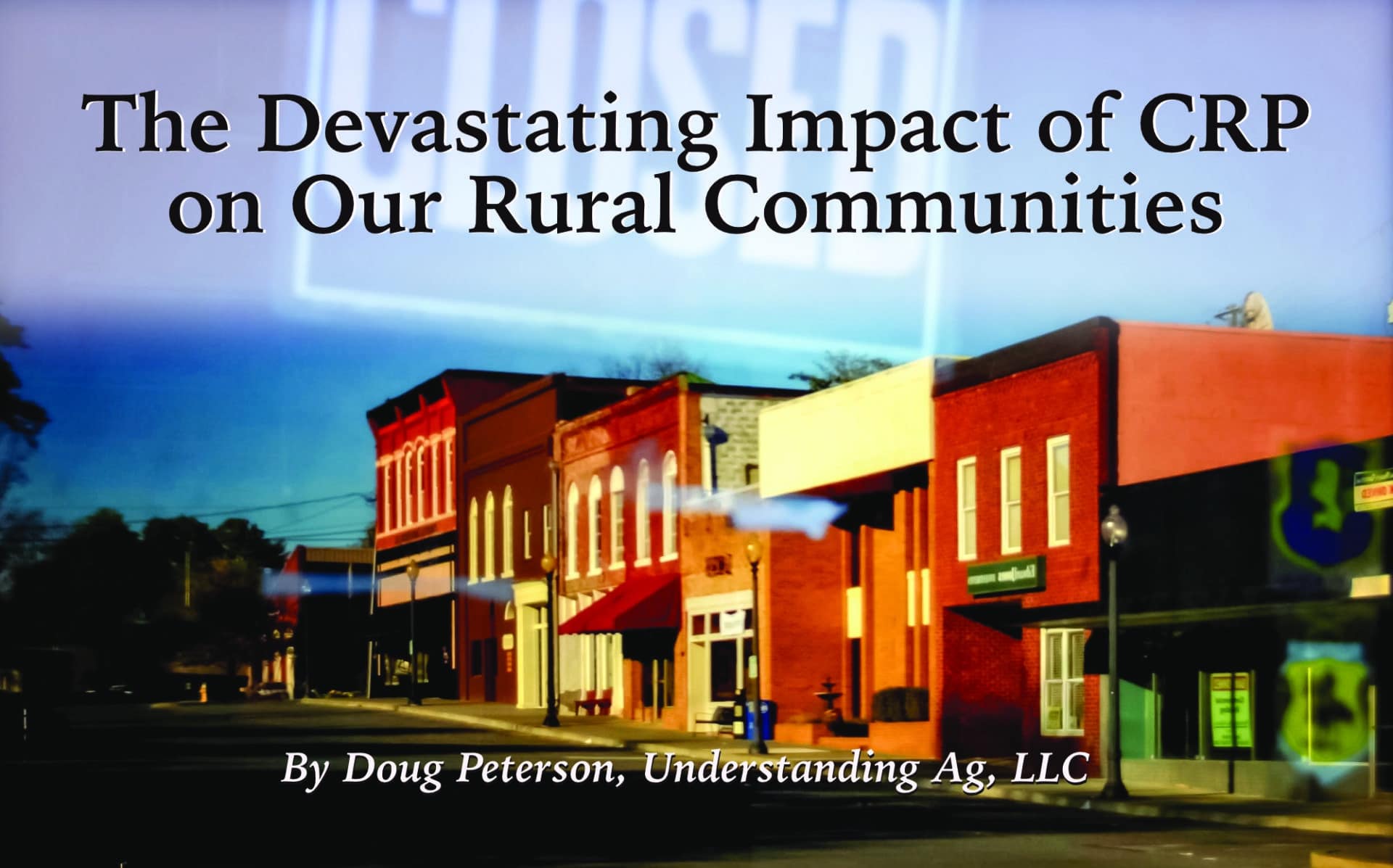
The Conservation Reserve Program (CRP) has been an extremely popular agricultural program that has been around for 35 years. Landowners are paid to enroll their land into this federal program to supposedly “conserve” it for the future. To qualify, landowners have to take cropland and plant it to some kind of grass that prevents erosion; offers wildlife habitat; and improves water quality or provides some other environmental benefit.
At first glance, CRP appears to offer many conservation benefits, but it comes with many underlying problems.
When CRP was first introduced in the 1985 Farm Bill, there were significant limitations on what land could be enrolled. Any land that was not in cropland prior to the initiation of the program could not be enrolled in CRP. But that changed in a subsequent Farm Bill. Now, people can purchase grassland, kill the grass and have it farmed for a few years to meet the cropland requirement, and then enroll it into the CRP.
In many cases, land remained in grass because it was too poor to produce a grain crop profitably or was too erodible to be safely farmed without excessive erosion. The lure of easy money led greedy individuals to increase the damage to the land just so they could take advantage of a taxpayer-funded conservation program. How much sense does it make for us to allow someone to destroy existing grassland, crop it for a few years, and then pay them an annual payment to put it back to grass?
Even though billions of dollars have been paid to landowners with land in CRP, it has caused a huge economic drain to small rural communities. Well over 50% of CRP land is owned by absentee landowners, according to current estimates. This could include descendants of past farmers, hunting clubs or even investments groups.
Most wealth in the world originates with some type of a natural resource. There is no doubt that things like intellectual property (computer programs) also develop a tremendous amount of wealth but without the natural resources it takes to build the hardware that the software runs on those computer programs are not worth very much. There are places in the United States, like Texas and North Dakota, where oil generates huge amounts of wealth that fuels the economy in those areas. Other areas generate wealth with timber, mined minerals and even tourism.
In a large part of the Midwest, however, we don’t have an abundance of any of these wealth-generating resources. We generate the majority of our wealth from the use of the soil. Most CRP land is owned by absentee landowners living somewhere other than where their land is located, so the wealth generated from that land doesn’t stay in the community where the land is located. These landowners don’t buy groceries, or cars or equipment in those small, rural towns. Their children don’t go to school in the town where the land is situated. Families from those CRP farms don’t go to church in those towns. CRP-generated income most often gets spent in the urban areas where the absentee landowners live.
In short, CRP is an economic killer for the rural communities with large acreages of CRP located in their area.
Here is very personal example. When I was growing up in the north Missouri community of Newtown in the 1960s through the early 1980s, it was a thriving little town. There were many businesses, including a grocery store, two beauty shops, two churches, a barber shop, café, feed store, grain elevator, car wash, laundromat, TV and electronics store, bank, meat locker, school, post office, gas station, propane store, pool hall, lumberyard and a hardware store, which was operated by my grandfather, Bud Gregory.
Today there is a single church, a half-time post office, grocery store, the Helena Chemical Company and a school with 97 students in grades K-12. That is not 97 students per grade, that is 97 total students in kindergarten through 12th grade. Without question, CRP has been a big contributor to the population decline in my hometown.
In recent months I have read about a plan to “conserve” 30% of the acres in our country. The plan is to use CRP as a major source of funding for that program. If our current agricultural production program is so good for our environment, then why do we need to conserve anything?
But what if we had families living on those farms who were using regenerative farming practices—raising and selling food healthy food to our urban neighbors and then bringing those consumer dollars back to our small towns?
Farming with soil health-improving regenerative farming principles and practices provides a practical way to regenerate the health of our soil, our environment, our family farms, our health AND the economic health and viability of our rural communities.
To fully realize this consequential opportunity, lawmakers must transform their conventional agricultural policy mindset and integrate regenerative agriculture incentives into current and future federal farm policy.
